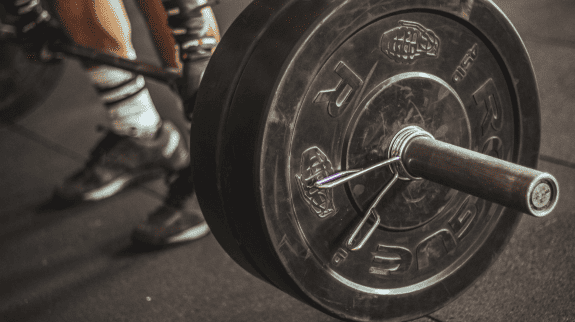Contrary to popular belief, weightlifting is not just for men. Women can benefit greatly from lifting weights, both physically and mentally. In this article, we will explore the science behind women and weightlifting and discuss the many benefits that weightlifting can offer to women.
KEY TAKEAWAYS
- Weightlifting is a beneficial form of exercise for women, both physically and mentally.
- Women who lift weights can experience improved strength, body composition, and overall physical performance.
- Despite common misconceptions, weightlifting will not make women bulky or masculine, and it can be safely and effectively incorporated into a fitness routine.
Why Women Should Lift Weights? The Science Behind it.

Research has shown that women who lift weights helps with performance, and can help women to lower their body fat percentage, leading to improved body composition, increased muscle mass and a more toned appearance.
Despite the many benefits of weightlifting for women, there are still many misconceptions and myths surrounding this form of exercise. Some women may worry that lifting weights will make them bulky or masculine, while others may be intimidated by the weight room. In the following sections, we will address some of these misconceptions and provide tips for how women can safely and effectively incorporate weightlifting into their fitness routines.
Hormonal Benefits
Weightlifting can have a positive impact on women’s hormonal balance. According to a study published in the Journal of Strength and Conditioning Research, resistance training can increase the levels of testosterone and growth hormone in women. These hormones are crucial for muscle growth and repair, which can help women build lean muscle mass and improve their overall body composition.
Furthermore, weightlifting can help women regulate their blood pressure and insulin levels. Insulin is a hormone that regulates blood sugar levels and helps the body store excess glucose as fat. By improving insulin sensitivity, women can reduce their risk of developing type 2 diabetes and other metabolic disorders.
Bone Density Improvement
Weightlifting can also improve women’s bone density. As women age, they become more susceptible to osteoporosis, a condition characterized by weak and brittle bones. By engaging in weight-bearing exercises, such as weightlifting, women can improve their bone density and reduce their risk of fractures and other bone-related injuries.
According to the National Osteoporosis Foundation, weightlifting can help women maintain their bone mass and reduce their risk of developing osteoporosis. By putting stress on the bones, weightlifting can stimulate the growth of new bone tissue, which can improve overall bone health.
Benefits of Weightlifting for Women

Increased Metabolic Rate and Improved Body Composition
One of the most significant benefits of weightlifting for women is that it can increase their metabolic rate. This means that their bodies will be able to burn more calories even when they are at rest. Studies have shown that women who lift weights regularly can experience a significant increase in their metabolic rate, which can help them to lose weight and maintain a healthy body weight.
Enhanced Mood and Mental Health
Weightlifting can also have a positive impact on a woman’s mood and mental health. including a reduction in stress and anxiety levels, an increase in self-esteem, and an improvement in overall mental health. Additionally, weightlifting can release endorphins, which are natural mood-boosting chemicals that can help to alleviate symptoms of depression.
Boosted Energy Levels
Weightlifting can also help to boost a woman’s energy levels. Regular weightlifting can help to improve cardiovascular health and fitness, increase strength and endurance, and improve overall physical performance. This can help women to feel more energized and alert throughout the day.
Misconceptions About Women and Weightlifting

There are many misconceptions about women and weightlifting that have prevented women from incorporating this beneficial exercise into their fitness routine. In this section, we will debunk two common myths about women and weightlifting.
Bulking Up Myth
One of the most common misconceptions about women and weightlifting is that lifting weights will make them bulky or masculine. However, this is not true. Women have significantly lower levels of testosterone than men, which is the hormone responsible for muscle growth. As a result, women are not able to build muscles as quickly or easily as men.
In fact, lifting weights can actually help women achieve a leaner and more toned physique. Resistance training helps to increase muscle mass, which in turn increases metabolism and helps burn fat.
Age-Related Concerns
Another common misconception about women and weightlifting is that it is not safe for older women. However, weightlifting can be safe and beneficial for women of all ages, including older women.
In fact, weightlifting can help older women maintain muscle mass and bone density, which can help prevent osteoporosis and other age-related conditions. Additionally, weightlifting can help improve balance and coordination, which can help prevent falls and other injuries.
With proper guidance and supervision, weightlifting can be a safe and effective exercise for women of all ages.
How to Start a Weightlifting Routine

Starting a weightlifting routine can be intimidating, especially if you have never lifted weights before. However, with the right approach and guidance, weightlifting can be a safe and effective way to improve your overall health and fitness. Here are some tips to help you get started.
Choosing the Right Weights
When starting a weightlifting routine, it’s important to choose the right weights. Using weights that are too heavy can increase your risk of injury, while using weights that are too light may not provide enough resistance to challenge your muscles. Here are some guidelines to help you choose the right weights:
- Start with lighter weights: If you’re new to weightlifting, start with lighter weights to get used to the movements and build your strength gradually.
- Use the right weight for each exercise: Different exercises require different weights. For example, you may be able to lift heavier weights for squats than for bicep curls.
- Aim for 8-12 reps: Choose a weight that allows you to complete 8-12 reps with good form. If you can’t complete 8 reps, the weight is too heavy. If you can complete more than 12 reps, the weight is too light.
Creating a Balanced Routine
When creating a weightlifting routine, it’s important to balance different muscle groups and exercises to avoid overworking certain areas and neglecting others. Here are some tips to help you create a balanced workout routine too:
- Include compound exercises: Compound exercises work multiple muscle groups at once, which can help you save time and build overall strength. Examples include squats, deadlifts, and bench presses.
- Balance upper and lower body exercises: Make sure to include exercises that work both your upper and lower body to avoid overworking one area.
- Focus on form: Proper form is essential for preventing injury and getting the most out of your workout. Make sure to learn the proper form for each exercise and practice it consistently.
How can women incorporate weightlifting into their fitness routine?
The general recommendation from experts is to aim for 3–5 weight training sessions per week, while also factoring in days for cardio workouts and rest. The specific number of sessions varies based on considerations such as your training intensity, volume, required recovery time, and personal schedule.
In theory, it’s possible to engage in weight training every day, but it’s essential to allow at least 48 hours of recovery time for each muscle group. For instance, if you work on your back and shoulders on a Monday, it’s advisable to wait until Wednesday or Thursday before targeting those muscle groups again. Here’s a sample 1-week exercise routine:
Monday: Focus on upper body strength training first, targeting arms, shoulders, and back.
Tuesday: Embrace an active recovery day that includes cardio activities like walking, running, cycling, or swimming.
Wednesday: Concentrate on lower body training, working on glutes, quads, and hamstrings.
Thursday: Another active recovery day, involving cardio exercises as mentioned earlier, along with a core workout.
Friday: Consider this an optional training day. You can choose either lower body or upper body training based on your preferences and goals.
Saturday: Engage in a high-intensity full-body workout through interval training (HIIT). This session will challenge your entire body.
Sunday: It’s your well-deserved rest day. Take this opportunity for gentle stretching, yoga, or Pilates to promote flexibility and relaxation.
Remember to start slowly, listen to your body, and seek guidance from a qualified trainer or coach if you need help getting started.
Safety Precautions for Women Weightlifters

When it comes to weightlifting, safety should always be the top priority. All weightlifters not just women, should take certain precautions to avoid injuries and get the most out of their workouts.
Proper Form and Technique
Proper form and technique are crucial to prevent injuries and get the most out of your workouts. Focus on maintaining proper posture and alignment throughout your lifts. This means keeping the spine in a neutral position, engaging the core muscles, and avoiding excessive arching or rounding of the back.
It’s also important to use the correct grip and hand placement for each exercise. For those who are new we suggest you work with a qualified trainer or coach to learn the proper form and technique for each lift.
Importance of Rest and Recovery
Rest and recovery are essential to prevent injuries and achieve optimal results. Allowing muscles time to rest and recover between workouts, as overtraining can lead to fatigue, injury, and decreased performance.
You should also prioritize proper nutrition and hydration to support their workouts and recovery. Adequate protein intake is especially important when weightlifting, as protein helps to repair and rebuild muscle tissue.
Conclusion

In conclusion, weight lifting is an excellent form of exercise for women. It offers a wide range of benefits, including increased strength, improved bone density, and reduced risk of injury. Additionally, weight lifting can help women burn fat and improve their overall body composition.
While many women may feel intimidated by weight lifting, it is important to remember that everyone starts somewhere. With the right guidance and training, anyone can learn how to lift weights safely and effectively.
It is recommended that women incorporate weight lifting into their fitness routine at least two to three times per week. This can be done at home or in a gym setting, depending on personal preferences and available resources.
Frequently Asked Questions
What are the benefits of weightlifting for women?
Weightlifting has numerous benefits for women, including building muscle mass, increasing bone density, improving metabolism, reducing the risk of injury and cardiovascular disease. Additionally, weightlifting can help women improve their posture, balance, and overall physical performance.
What are some common misconceptions about women lifting weights?
One common misconception is that weightlifting will make women bulky. However, this is not true, as women do not have enough testosterone to build large muscles like men. Another misconception is that weightlifting is dangerous for women, but as long as proper form is used and weights are gradually increased, weightlifting is a safe and effective form of exercise.
Can weightlifting help women lose weight?
Yes, weightlifting can help women lose weight by increasing muscle mass, which in turn increases metabolism and burns more calories at rest. However, weightlifting should be combined with a balanced diet and cardiovascular exercise for optimal weight loss results.
What are some tips for women who are new to weightlifting?
Women who are new to weightlifting should start with lighter weights and focus on proper form. It is also important to warm up before lifting heavy weights and to stretch after lifting to prevent injury. Women should also vary their workouts and gradually increase the weight as they become stronger.
What are some examples of weightlifting exercises that women can do?
Some examples of weightlifting exercises that women can do include squats, lunges, deadlifts, bench press, shoulder press, and bicep curls. Women can also use resistance bands or bodyweight exercises to incorporate weightlifting into a cardio exercise in their fitness routine.

